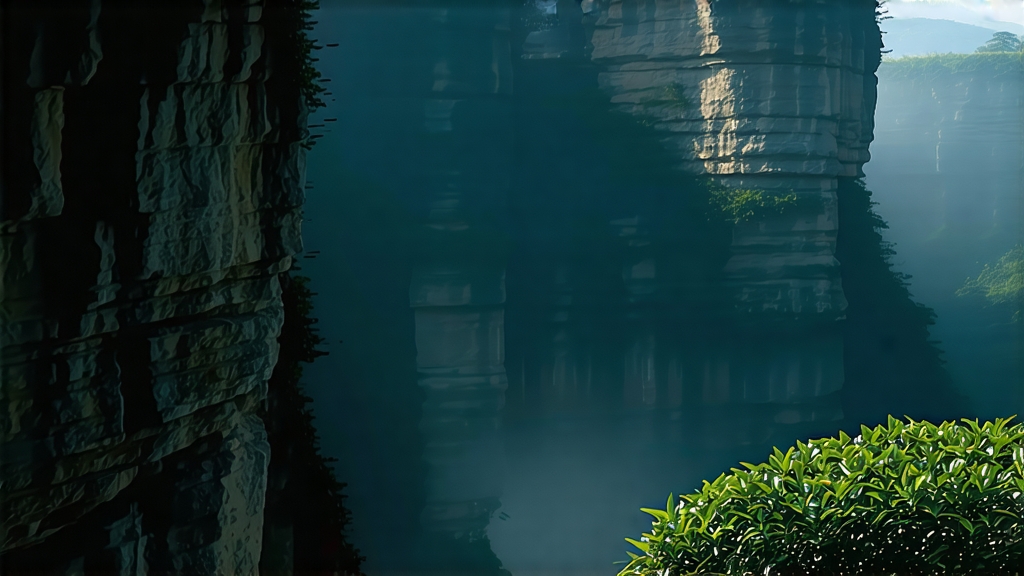
If green tea is China’s garden sprite and pu-erh its earthy sage, then Da Hong Pao—literally “Big Red Robe”—is the imperial scholar who strides out of mist-shrouded Wuyi cliffs in Fujian province, robes flaring, scent of mineral and orchid trailing behind. For four centuries this oolong has carried the aura of court legend, Daoist mysticism, and geology itself. International drinkers often meet it first through breathy travel blogs or airport gift tins, yet the real leaf is far more nuanced than the souvenir mythology suggests. This essay unpacks the history, cultivars, craft, and cupping ritual of the original “rock tea” so that you can taste the mountain rather than the marketing.
-
From imperial legend to Republican-era commerce
The best-known story dates to the Ming dynasty: a Ming emperor’s mother lay ill; monks from Wuyi presented a tea that cured her. In gratitude the emperor sent vermillion imperial robes to drape the six mother bushes clinging to Jiulongke ravine. Whether apocryphal or not, the tale fixed the name and the color red in Chinese imagination. By the late Qing the bushes were already so revered that armed guards protected them; in 1927 the local government auctioned 40 g of their leaf for the price of a small house. After 1949 the mother bushes were nationalized, and in 2006 plucking from them was officially halted to preserve the 350-year-old plants. Today what circulates as “Da Hong Pao” is either (a) genetic offspring of those bushes propagated by cuttings—called “purebred qizhong”—or (b) skillful blends of selected Wuyi cultivars that recreate the mother bush flavor profile. -
Geology in a cup: why “rock rhyme” matters
Wuyi’s danxia landform gives rise to steep, mineral-rich cliffs that absorb and radiate heat, creating a unique mesoclimate. The soil is short on nitrogen but long on potassium and fluoride; roots struggle, polyphenols concentrate, and the finished tea acquires yan yun—literally “rock rhyme,” a tactile aftertaste of wet stone, cinnamon, and cooling menthol that lingers in the throat like the echo of a temple bell. No other oolong terroir replicates this, making yan yun the authentication mark sought by connoisseurs. -
Cultivars under the red robe umbrella
Although “Da Hong Pao” is a brand, it is traditionally assembled from five Wuyi bushes known collectively as qizhong (“strange cultivars”): Bei Dou, Qi Dan, Tieluohan, Baijiguan, and Shui Jin Gui. Each brings a solo note—Bei Dou contributes malt, Tieluohan orchid, Baijiguan brightness—yet when blended they harmonize into the classic profile. Modern clonal gardens also plant Wuyi #1 (a Bei Dou descendant) and Rou Gui for spice, but purists insist that any leaf lacking yan yun is merely “Wuyi oolong,” not Da Hong Pao. -
Craft: the charcoal tango
Picking occurs in late April when three half-mature leaves and a bud form the ideal “zhong kai mian” standard. After solar withering the leaves are shaken in bamboo drums to bruise edges, initiating oxidation at 30–40 %. The critical step is the midnight charcoal roast: pinewood embers are banked into a shallow pit, and the tea sits on woven rattan trays 60 cm above the heat. A master roaster adjusts depth, timing, and ash cover across 6–10 hours for three consecutive nights, resting the leaf in between. Over-roast masks floral notes; under-roast leaves grassy astringency. The final moisture target is 3 %, low enough to let the tea age gracefully for decades. -
Grades and market reality
Chinese law allows any Wuyi cliff tea to be sold as “Da Hong Pao,” so grades have proliferated:- Mother-tree relic (pre-2006, museum only)
- Purebred qizong (cuttings from mother bushes, <$1 per gram)
- Blended yan cha (skillful mix, 0.20–0.50 $/g)
- Flavored commodity (scented with osmanthus, <0.05 $/g)
Seek vacuum